Cardiorespiratory fitness as a predictor of intestinal microbial diversity and distinct metagenomic functions
- PMID: 27502158
- PMCID: PMC4976518
- DOI: 10.1186/s40168-016-0189-7
Cardiorespiratory fitness as a predictor of intestinal microbial diversity and distinct metagenomic functions
Abstract
Background: Reduced microbial diversity in human intestines has been implicated in various conditions such as diabetes, colorectal cancer, and inflammatory bowel disease. The role of physical fitness in the context of human intestinal microbiota is currently not known. We used high-throughput sequencing to analyze fecal microbiota of 39 healthy participants with similar age, BMI, and diets but with varying cardiorespiratory fitness levels. Fecal short-chain fatty acids were analyzed using gas chromatography.
Results: We showed that peak oxygen uptake (VO2peak), the gold standard measure of cardiorespiratory fitness, can account for more than 20 % of the variation in taxonomic richness, after accounting for all other factors, including diet. While VO2peak did not explain variation in beta diversity, it did play a significant role in explaining variation in the microbiomes' predicted metagenomic functions, aligning positively with genes related to bacterial chemotaxis, motility, and fatty acid biosynthesis. These predicted functions were supported by measured increases in production of fecal butyrate, a short-chain fatty acid associated with improved gut health, amongst physically fit participants. We also identified increased abundances of key butyrate-producing taxa (Clostridiales, Roseburia, Lachnospiraceae, and Erysipelotrichaceae) amongst these individuals, which likely contributed to the observed increases in butyrate levels.
Conclusions: Results from this study show that cardiorespiratory fitness is correlated with increased microbial diversity in healthy humans and that the associated changes are anchored around a set of functional cores rather than specific taxa. The microbial profiles of fit individuals favor the production of butyrate. As increased microbiota diversity and butyrate production is associated with overall host health, our findings warrant the use of exercise prescription as an adjuvant therapy in combating dysbiosis-associated diseases.
Keywords: Butyrate; Community diversity; Dysbiosis; Exercise; Intestinal microbiota; Metagenome; Microbial ecology; Physical activity.
Figures
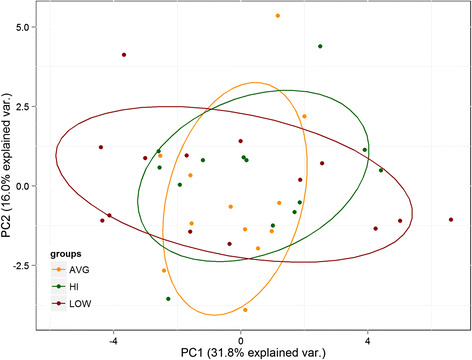
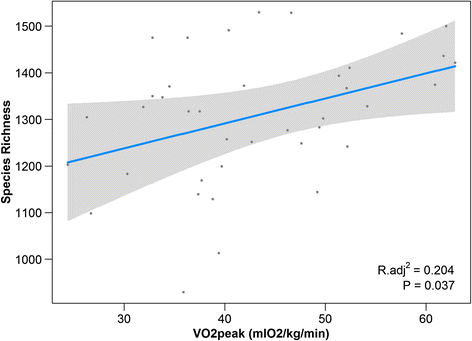
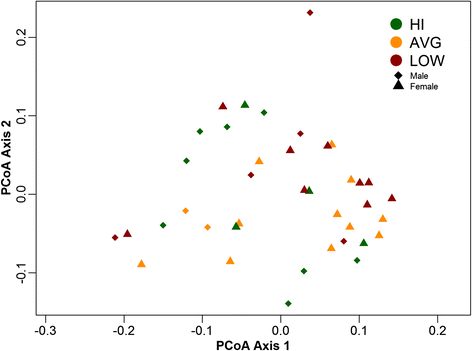
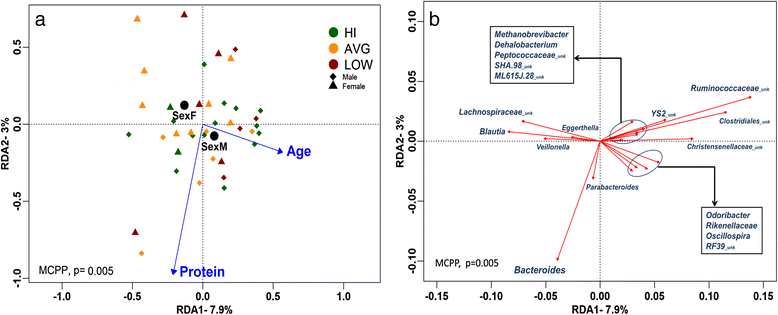
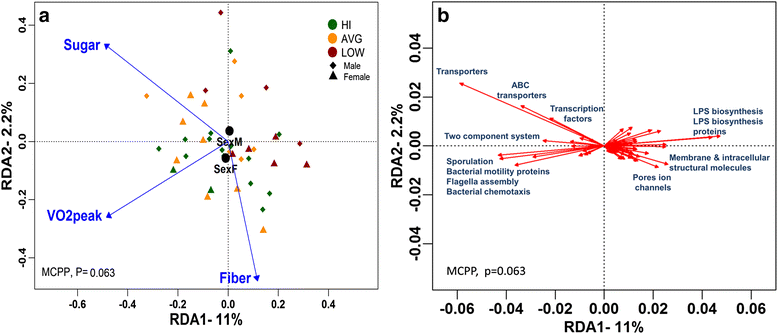
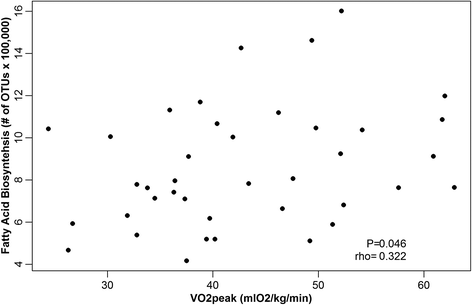
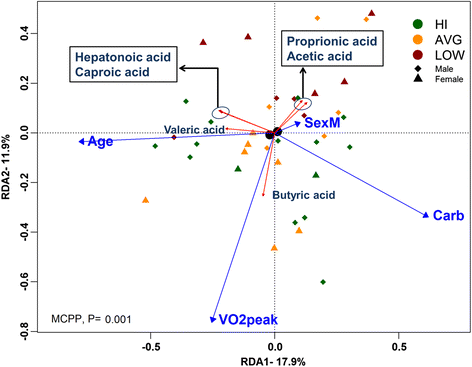
Similar articles
-
Interleukin-15 promotes intestinal dysbiosis with butyrate deficiency associated with increased susceptibility to colitis.ISME J. 2017 Jan;11(1):15-30. doi: 10.1038/ismej.2016.114. Epub 2016 Sep 20. ISME J. 2017. PMID: 27648810 Free PMC article.
-
Alterations of the Gut Microbiome in Hypertension.Front Cell Infect Microbiol. 2017 Aug 24;7:381. doi: 10.3389/fcimb.2017.00381. eCollection 2017. Front Cell Infect Microbiol. 2017. PMID: 28884091 Free PMC article.
-
Production, Structural Characterization, and In Vitro Assessment of the Prebiotic Potential of Butyl-Fructooligosaccharides.Int J Mol Sci. 2020 Jan 10;21(2):445. doi: 10.3390/ijms21020445. Int J Mol Sci. 2020. PMID: 31936703 Free PMC article.
-
A Cross-Talk Between Microbiota-Derived Short-Chain Fatty Acids and the Host Mucosal Immune System Regulates Intestinal Homeostasis and Inflammatory Bowel Disease.Inflamm Bowel Dis. 2018 Feb 15;24(3):558-572. doi: 10.1093/ibd/izx029. Inflamm Bowel Dis. 2018. PMID: 29462379 Review.
-
Influence of Exercise on the Human Gut Microbiota of Healthy Adults: A Systematic Review.Clin Transl Gastroenterol. 2020 Feb;11(2):e00126. doi: 10.14309/ctg.0000000000000126. Clin Transl Gastroenterol. 2020. PMID: 32463624 Free PMC article.
Cited by
-
Regular Exercise Training Induces More Changes on Intestinal Glucose Uptake from Blood and Microbiota Composition in Leaner Compared to Heavier Individuals in Monozygotic Twins Discordant for BMI.Nutrients. 2024 Oct 20;16(20):3554. doi: 10.3390/nu16203554. Nutrients. 2024. PMID: 39458548 Free PMC article.
-
Associations between Changes in Fat-Free Mass, Fecal Microbe Diversity, and Mood Disturbance in Young Adults after 10-Weeks of Resistance Training.Microorganisms. 2022 Nov 26;10(12):2344. doi: 10.3390/microorganisms10122344. Microorganisms. 2022. PMID: 36557597 Free PMC article.
-
Effects of short-term endurance exercise on gut microbiota in elderly men.Physiol Rep. 2018 Dec;6(23):e13935. doi: 10.14814/phy2.13935. Physiol Rep. 2018. PMID: 30536648 Free PMC article. Clinical Trial.
-
Limited Effects of Low-to-Moderate Aerobic Exercise on the Gut Microbiota of Mice Subjected to a High-Fat Diet.Nutrients. 2019 Jan 11;11(1):149. doi: 10.3390/nu11010149. Nutrients. 2019. PMID: 30641996 Free PMC article.
-
Characteristics of the gut microbiome in esports players compared with those in physical education students and professional athletes.Front Nutr. 2023 Jan 16;9:1092846. doi: 10.3389/fnut.2022.1092846. eCollection 2022. Front Nutr. 2023. PMID: 36726816 Free PMC article.
References
Publication types
MeSH terms
Substances
Grants and funding
LinkOut - more resources
Full Text Sources
Other Literature Sources
Research Materials

